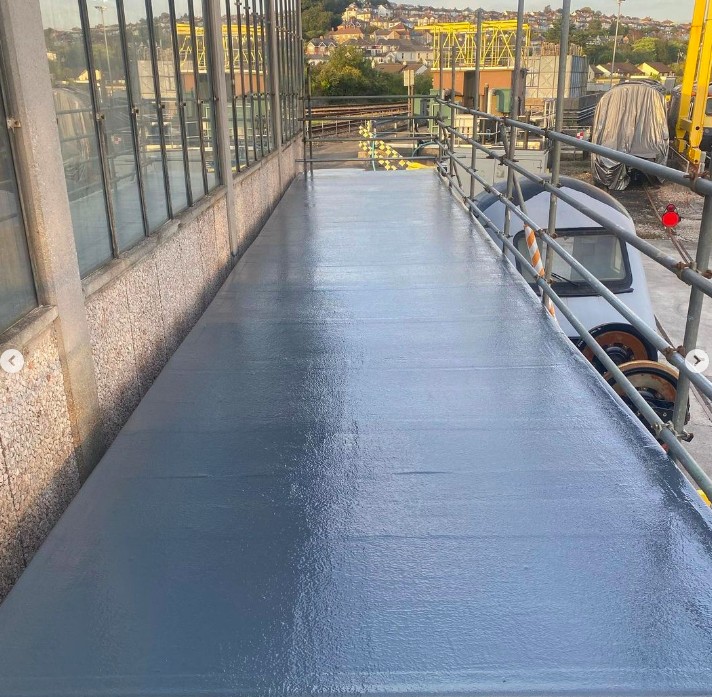 Install a Fibreglass Roof
Install a Fibreglass Roof
The Fibreglass Roof system has been described as technical, the recent years have seen a huge change in its description with a fair few people completing their own work as DIY projects.
By following preparations, and guides and watching youtube videos Joe Blogg can even complete a hitch-free and successful installation.
Let’s quickly highlight the installation processes:
Install a Fibreglass Roof as a DIYer
Roof preparation to receive fiberglass is one of the most important first steps: Fibreglass roofing installation is carried out by first preparing the decking.
This is done by removing all the unwanted substances related to old decking, and ensuring that the roofing joists are cleaned and cleared of lots in readiness to receive fiberglass. All the conditions specified ensure the decking is dry and free of moisture, this must be met to avoid fiberglass failure.
The correct boards must be used based on the application areas. The boards are laid 90o lengthways to the roof support to form the base.
The fibreglass flat roofing mainly depends on the correct laying of the deck as incorrect or faulty deck preparation can affect the quality of the fiberglass installation. Composite Roof Supplies recommends using OSB for best results.
secondly, the Joining of roofing members: The boards are nailed to the timber supports with the use of a compressed gas or air-powered nail gun to reduce any damage and at the same time for roofing rigidity. After driving nails into the joists, the edge trims will then be nailed with the help of a screw gun or hammer or stapled to the decking board,
After the joint trimming, the platform is now ready to receive lamination. See the blog post regarding the best boards to use
Roof lamination is a key step in achieving a nice finish: This process involves mixtures of resin in a correct proportion before applying it on the mat to cover all the corners. It is important to use the correct resin ratio to glass.
However, the recommended rate is to apply one-third resin and two-thirds glass to the board and mat respectively in the process of laying the main laminate. This will finally give a resin-coated deck and transparent finished laminate.
Install a Fibreglass Roof Final application: The laminate is allowed to dry, and the top-coated resin is then added with the required amount of catalyst mixtures applied thinly to avoid crack. You can find Catalyst ratio charts on the catalyst container from your Composite Roof Supplies kit.
Contact CRS:
Tel: 0207 101 3977
Email: sales@compositeroofsupplies.co.uk
FAQs for Install a Fibreglass Roof:
Q: Is it possible to install a Fibreglass Roof as a DIY project? A: Yes, many individuals have successfully completed Fibreglass Roof installations as DIY projects by following detailed preparations, guides, and online resources, such as YouTube videos. Proper planning and adherence to instructions can lead to a successful and hassle-free installation.
Q: What is the crucial first step in Fibreglass Roof installation? A: Roof preparation is paramount for a successful Fibreglass Roof installation. This involves thorough cleaning and clearing of the decking, removal of unwanted substances, and ensuring the roofing joists are dry and free of moisture. Using the correct boards, such as OSB, is recommended for optimal results.
Q: Why is the correct laying of decking boards essential in fibreglass flat roofing? A: The correct laying of decking boards is critical as faulty deck preparation can affect the quality of the Fibreglass Roof installation. Composite Roof Supplies recommends using OSB boards laid 90 degrees lengthways to the roof support to form a solid base.
Q: How are roofing members joined during the installation process? A: Roofing members are joined by nailing the boards to timber supports using compressed gas or air-powered nail guns. Edge trims are then nailed or stapled to the decking board for additional rigidity before the platform is ready to receive lamination.
Q: What is the key step in achieving a nice finish in Fibreglass Roof installation? A: Roof lamination is a crucial step in achieving a nice finish. This involves mixing resin in the correct proportion before applying it to the mat to cover all corners. The recommended ratio is one-third resin and two-thirds glass for the main laminate, resulting in a resin-coated deck and a transparent finished laminate.
Q: How is the final application done in Fibreglass Roof installation? A: After allowing the laminate to dry, the final application involves adding top-coated resin with the required amount of catalyst mixtures applied thinly to avoid cracks. Catalyst ratio charts can be found on the catalyst container from your Composite Roof Supplies kit for reference.
Install a Fibreglass Roof: Final Conclusion,
In conclusion, embarking on the installation of a Fibreglass Roof, once considered a highly technical task, has witnessed a notable shift in recent years. With the rise of accessible resources, comprehensive guides, and instructional videos available online,
Many individuals, including DIY enthusiasts like Joe Blogg, have successfully completed Fibreglass Roof installations with confidence and efficiency.
The installation process involves meticulous steps, starting with the crucial roof preparation phase. This initial step requires thorough cleaning of the decking, removal of unwanted substances, and ensuring the roofing joists are dry and free of moisture. Choosing the correct boards, such as OSB, is emphasized for optimal results.
The subsequent joining of roofing members is facilitated by nailing boards to timber supports, utilizing compressed gas or air-powered nail guns for precision. Edge trims are then affixed to the decking board, enhancing rigidity and preparing the platform for the lamination process.
Roof lamination, a key step for achieving a polished finish, entails the accurate mixing of resin in the correct proportion before application to the mat, covering all corners. The recommended ratio of one-third resin to two-thirds glass ensures a resin-coated deck and a transparent finished laminate.
The final application involves allowing the laminate to dry and adding top-coated resin with the necessary catalyst mixtures, applied thinly to prevent cracks. Catalyst ratio charts provided with Composite Roof Supplies kits offer essential guidance for this stage.
In summary, the installation of a Fibreglass Roof, once perceived as a complex undertaking, has become more accessible through careful planning, comprehensive guides, and the wealth of online resources.
By following the outlined steps and utilizing recommended materials, individuals can achieve a professional and durable Fibreglass Roof installation, contributing to the growing trend of successful DIY projects in this field.







